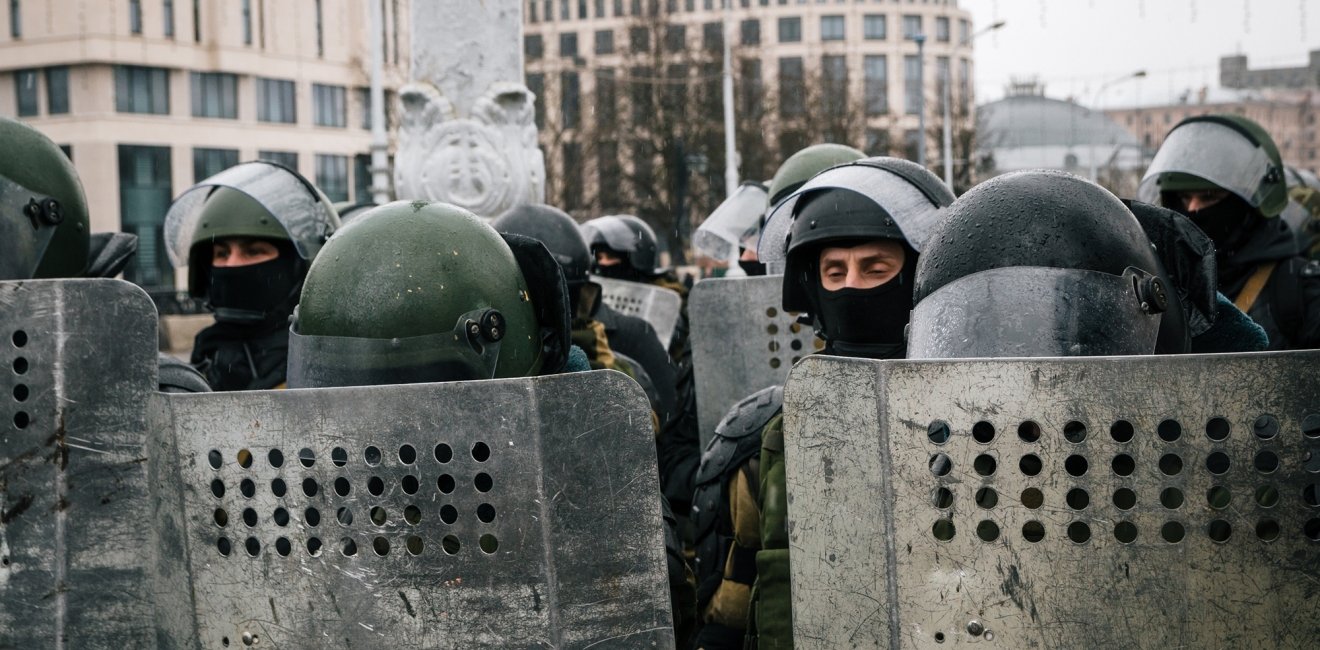
A blog of the Kennan Institute
BY MYKHAILO MINAKOV
For the past five years, the eastern half of Europe has been structured as two coexisting belts, illiberal and authoritarian. Under the many stresses of 2020, the authoritarian belt seems to have entered a crisis phase.
The most obvious examples of illiberal democracy were established in Poland and Hungary, but other countries in eastern and central Europe, once dedicated to liberal-democratic transformation and EU fundamental values, have also gone down this path. This illiberal region extends from Tallin to Sofia, while the authoritarian belt stretches from Ankara to Baku, Moscow, and Minsk. In between are several states—Armenia, Georgia, Moldova, and Ukraine—which oscillate between revolution, illiberal democracy, conservative nationalism, and attempts at autocracy. In addition, there are six de facto statelets, mainly nonfree political units bearing the strong imprint of warlordism, in the region.
The political ecology of eastern Europe is now changing as a result of cracks in authoritarian stability.
Putin’s regime is transforming from manipulative to repressive authoritarianism. From 2012 on, Putin has been strengthening his autocratic grip over Russia through systematic state propagandizing and public opinion control, culminating in the “Crimean syndrome.” The annexation of Crimea in 2014 revived Putin’s declining popularity and gave him the momentum needed to narrow the space for civil society and opposition groups, with little pushback. But in 2019 his approval rating once again started to decline. Economic issues, the effects of the COVID-19 quarantine measures, and traditional bad governance started dispersing the fog of Putin’s stability. Despite the electoral success of Putin’s hand-picked governors in Kremlin-controlled local elections, the sporadic victories of opposition figures in several municipal elections and the persisting protests in Khabarovsk show the strength of popular discontent in Russia. The attempted murder of Aleksei Navalny is not just another case in a long chain of opposition figure poisonings. It is a message to Russian federal and local elites that loyalty is required in a time of possible repression.
Much greater internal distress is evident in Belarus. After twenty-six years of authoritarian stability, Belarus has entered a period of tenacious mass protests. Unlike Russia, where dissent manifests on the periphery and involves a limited number of participants, the Belarusian protests involve tens of thousands of citizens and have proliferated in the capital and major regional cities. Even though Alexander Lukashenko seems to be staying in power, his regime will not be able to continue business as usual. It must become repressive since—being in conflict with the West and in uncertain relations with the Kremlin—it cannot produce the same benefits for Belarusian households as it has in the past. The undemocratic legitimacy of the autocrat vanishes.
If the autocrats in Minsk and Moscow now face internal conflicts, two other links in the authoritarian belt, Baku and Ankara, have entered into external conflict in the southern Caucasus. The frozen conflict over Nagorno-Karabakh has once again heated up: the war between Armenia and Azerbaijan for this land restarted several days ago. This conflict threatens to involve Russia and Turkey. The new wave of fighting has emerged at a time when the Azerbaijani and Turkish rulers could assume that a spurt of war-produced patriotism would add legitimacy to their regimes.
Finally, the post-Soviet nonrecognized proto-states—including Abkhazia, the “Donetsk People’s Republic” and “Luhansk People’s Republic” on Ukraine’s territory, South Ossetia, and Transnistria—have ginned up outsized reactions to Azerbaijan’s attempts to reestablish control over Nagorno-Karabakh. All de facto authorities have made alarmist statements and started urgent preparations for possible conflict with their parental states—Georgia, Moldova, and Ukraine. These factors increase the risk that frozen conflicts elsewhere in eastern Europe will similarly heat up.
The distress in the authoritarian belt adds more contradictions to all of eastern Europe. Poland, Romania, and the Baltic states have openly supported the Belarus opposition. The EU has entered into open political conflict with Belarusian president Lukashenko. And the divergences between post-Soviet authoritarian and semifree states in the Donbas and northern Caucasus are solidifying as the Nagorno-Karabakh campaign continues.
Thus eastern Europe’s authoritarian belt has entered a phase of instability. The former authoritarian solidarity has disappeared, giving way to mutual hostility. Azerbaijan, Russia, and Turkey may grow much more hostile toward each other over Nagorno-Karabakh. Distrust between Lukashenko and Putin has deepened despite intensified communication in recent weeks. And the post-Soviet proto-states prepare for a new wave of conflict with their parental states.
Eastern Europe’s autocrats sold their populations stability and national pride. Now that stability has proved evanescent, will pride be enough to preserve the resilience of the authoritarian belt?
The opinions expressed in this article are those solely of the author and do not reflect the views of the Kennan Institute.
Author


Kennan Institute
The Kennan Institute is the premier US center for advanced research on Eurasia and the oldest and largest regional program at the Woodrow Wilson International Center for Scholars. The Kennan Institute is committed to improving American understanding of Russia, Ukraine, Central Asia, the South Caucasus, and the surrounding region through research and exchange. Read more

Explore More in Focus Ukraine
Browse Focus Ukraine
Talking to the Dead to Heal the Living

Ukrainian Issue in Polish Elections


